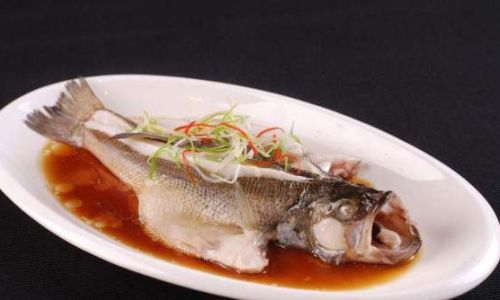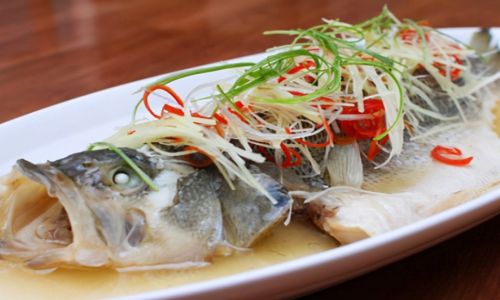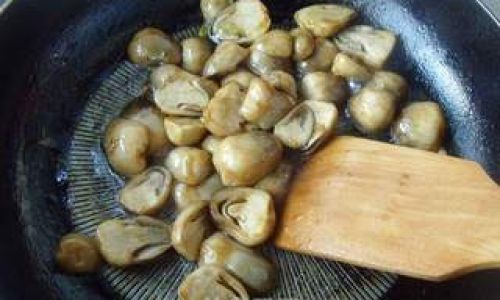Table of content
Steaming fish is a beloved cooking method across culinary traditions, prized for preserving flavor, texture, and nutrients. Yet, a common dilemma arises when time is limited or fresh fish is unavailable: Can you steam frozen sea bass directly without thawing it first? This question sparks debate among home cooks and chefs alike. Some swear by the convenience of cooking from frozen, while others insist thawing is non-negotiable for optimal results. This article delves into the science, techniques, and practical tips to answer this question definitively, ensuring your next steamed sea bass dish is a triumph.

The Science Behind Steaming Frozen Fish
To understand whether steaming frozen sea bass works, we must first grasp how freezing affects fish. When sea bass is frozen, ice crystals form within its muscle fibers. These crystals can damage cell structures, leading to moisture loss during cooking—a phenomenon often blamed for rubbery or dry texture. However, modern flash-freezing techniques minimize this damage, preserving more of the fish’s original quality.
Steaming, a gentle moist-heat cooking method, relies on hot steam to cook food evenly. When applied to frozen fish, the process differs slightly from thawed preparations. The steam must first thaw the exterior layers before penetrating inward, which can extend cooking time. This delayed heat transfer might seem like a drawback, but it offers a hidden advantage: slower, more gradual cooking can prevent overcooking, a common pitfall with delicate proteins like fish.

Pros and Cons of Steaming Frozen Sea Bass
Advantages
- Convenience: Skipping thawing saves hours, making weeknight dinners feasible.
- Reduced Risk of Overcooking: The gradual thawing-and-cooking process can yield more forgiving results.
- Texture Preservation: Some chefs argue that cooking from frozen maintains a firmer texture, as the fish has less time to break down.
Disadvantages
- Uneven Cooking: The exterior may cook faster than the center, leading to a dry exterior and undercooked core if not monitored carefully.
- Longer Cooking Time: Expect 20–30% more time than thawed fish.
- Seasoning Challenges: Frozen fish absorbs marinades or sauces less effectively, requiring adjustments to flavor profiles.
Step-by-Step Guide to Steaming Frozen Sea Bass
Selecting the Right Fish
Not all frozen sea bass is created equal. Look for:
- Vacuum-Sealed Packages: Minimize freezer burn.
- Uniform Thickness: Thicker fillets cook more evenly.
- Sustainable Sourcing: Opt for responsibly farmed or wild-caught varieties.
Preparation Hacks
- Rinse Under Cold Water: Gently pat dry to remove excess ice crystals.
- Score the Skin: Lightly cut the skin every inch to prevent curling and ensure even cooking.
- Aromatic Boosters: Place ginger slices, scallions, or citrus under the fish to infuse flavor during steaming.
Steaming Technique
- Use a Bamboo Steamer: Allows steam to circulate freely.
- Layer the Base: Line the steamer with parchment paper or cabbage leaves to prevent sticking.
- Adjust Heat: Start with high heat to thaw the exterior, then reduce to medium to cook through gently.
Timing and Temperature
- Thickness Matters: A 1-inch fillet takes 12–15 minutes; add 3–5 minutes for frozen.
- Check Doneness: Insert a knife into the thickest part; if it slides through easily, it’s done. Overcooking will result in a chalky texture.
Common Mistakes to Avoid
- Overcrowding the Steamer: Leave space for steam to circulate.
- Skipping Seasoning: Frozen fish benefits from bold flavors—marinate briefly in soy sauce, mirin, or sesame oil post-steaming.
- Opening the Lid Too Often: Each peek releases steam and prolongs cooking.
When to Thaw (and When Not To)
While steaming from frozen is viable, there are exceptions:

- Thaw If:
- The fish is unevenly frozen (e.g., partially thawed and refrozen).
- You plan to deep-fry or pan-sear (these methods require thawing for crispy skin).
- Skip Thawing If:
- You’re short on time.
- The recipe calls for minimal handling (e.g., simple steaming with ginger and soy).
Flavor Pairings and Recipe Ideas
Frozen sea bass thrives with vibrant, assertive flavors:
- Classic Chinese: Steamed with ginger, scallions, and a drizzle of hot oil.
- Mediterranean Twist: Top with cherry tomatoes, olives, and fresh herbs.
- Spicy Sichuan: Serve with a chili-bean sauce and garlic.
The Verdict: Yes, But With Caveats
Steaming frozen sea bass without thawing is entirely possible and can yield excellent results—if done correctly. The key lies in patience: extending cooking time, monitoring heat, and enhancing flavor post-steaming. However, thawing remains preferable for recipes demanding intricate seasoning or high-heat cooking methods.

Beyond Steaming: Alternative Cooking Methods
For those wary of steaming frozen fish, consider:
- Baking: Encase in foil with aromatics to trap moisture.
- Poaching: Simmer gently in flavorful broth.
- Sous-Vide: Precision cooking ensures even results, but requires specialized equipment.
Food Safety First
Regardless of method, ensure:

- Internal Temperature: Reaches 145°F (63°C) to kill pathogens.
- No Cross-Contamination: Use separate utensils for raw and cooked fish.
- Proper Storage: Consume within 2 months of freezing for peak quality.
Conclusion: Embrace the Frozen Fillet
In an era where convenience and sustainability intersect, cooking frozen sea bass directly is a skill worth mastering. While thawing offers flexibility, steaming from frozen democratizes gourmet cooking, transforming a humble freezer staple into a restaurant-worthy dish. Experiment with seasonings, trust your instincts, and remember: the best kitchen hacks are those that balance practicality with passion. So next time you stare at a frozen fillet, fear not—steam away, and savor the results.






0 comments